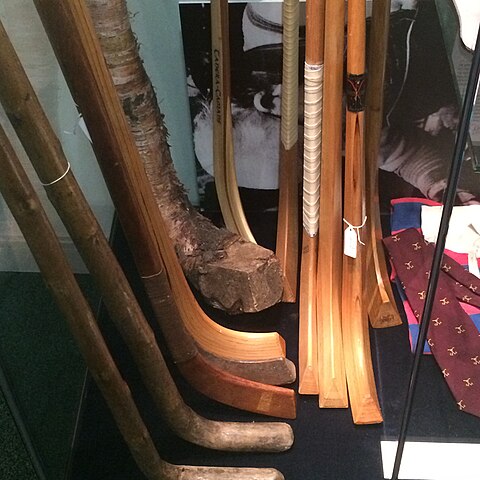
Shinty is a Scottish ball game with characteristics similar to soccer, hockey, and baseball. Players wield a tool similar to a hockey stick, called a caman, with which to hit a ball that is similar to a baseball, though slightly smaller. The object of the sport is to pass the ball through the opponents’ goal at the end of the field to score points.
Oral tradition relates that this traditional Scottish sport has ties back for 3 millennia, which, if true, would make it one of the oldest sports still in modern practice. However, verifiable records of the sport don’t reach this far back in history. Shinty shares an ancestral root with the Irish sport hurling, and as such, the two bear several similarities. The details of the original Gaelic sport are lost, though both shinty and hurling serve as relics to it.
Shinty has historically been a fairly dangerous game, which is part of the reason men are its primary practitioners. With balls reaching high speeds, moderate use of shoulder tackles, and players swinging camans, injuries are not uncommon.
Origins and History
Some sources claim that the Gaelic predecessor to shinty and hurling was played since 1200 BC, though no evidence to support such a claim can be found. Literary references only go back as early as the 5th century AD, though this does not preclude the possibility of an earlier origin. In addition, there is not enough information to determine when a branch of the Gaelic sport deviated into what we know today as shinty, so determining its own date of origin is near impossible.
Shinty may have influenced the collection of Native American sports called shinny, as the sports bear some similarities. There is speculation that a variant of shinty was brought to North America via European settlers, where it influenced a set of indigenous ball sports that appear to predate European contact. This is discussed in detail in the linked article.
How to Play
Not enough information is available to piece together the rules of the ancient Gaelic game, so differences between the modern version of shinty and variations practiced in the past centuries are unknown. As such, the rules for the modern version of the game are summarized below.
Two teams of 12 players each face each other on a rectangular field. Each team is comprised of 4 offensive players, 4 defensive, 3 midfield, and 1 goalkeeper. At each end of the field sits a netted goal approximately 10 feet tall and 12 feet wide. The objective of each team is to pass the ball into the opponents’ goal to score points. Whichever team scores the most points over the 45-minute game wins.
The players handle the ball with a curved hockey-like stick called a caman, which features slanted edges at the end that form a triangle when viewed from the front. As in traditional field hockey, the caman is used to manipulate the ball on the ground and strike it. Unlike within hurling, players are not allowed to handle the ball with their hands (excluding the goalkeeper, who is allowed to touch it without grabbing it). Players are also allowed to contact a grounded ball with one or both feet, typically in an attempt to stop a moving ball.
[raw_html_snippet id=”bib”]
Koch, J. T. (2006). Celtic culture: A historical encyclopedia. Santa Barbara, CA: ABC-CLIO.
Levinson, D., & Christensen, K. (1996). Encyclopedia of World Sport: From Ancient Times to the Present. ABC-CLIO Interactive.
[raw_html_snippet id=”endbib”]